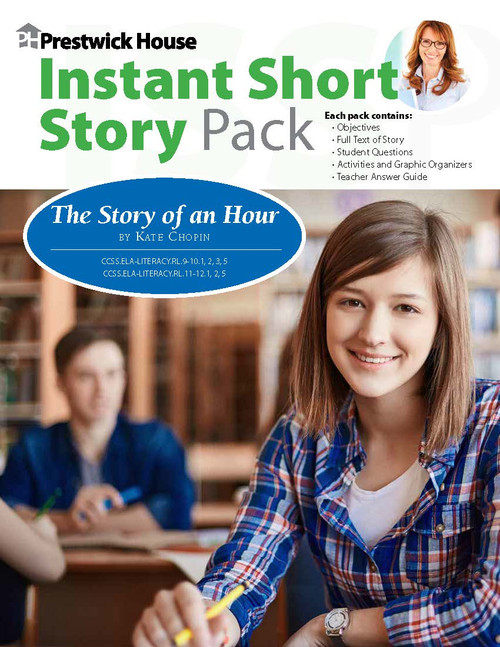Product Overview
Instant Resources for Young Goodman Brown by Nathaniel Hawthorne!
Whether you're looking for a short story to pair with the novel you're teaching, or you need a 2- to 3-day sub plan to use with the stories in your textbooks, Prestwick House Instant Short Story Packs go beyond basic comprehension to help students learn how to analyze literature.
Each downloadable pack addresses key skills through 5-10 standards-based analysis questions by guiding students through a series of scaffolding graphic organizers and in-class activities.
This Instant Short Story Pack for Young Goodman Brown by Nathaniel Hawthorne includes:
- Scaffolding graphic organizers and in-class activities
- Standards-based objectives
- Introduction and pre-reading notes
- Complete short story text
- Rigorous analysis questions
- Detailed teacher's answer guide
About Young Goodman Brown
“Young Goodman Brown” was first published anonymously in New England Magazine in April 1835. Hawthorne later included it in his collection Mosses from an Old Manse (1846). When the story first appeared, Hawthorne was still a fairly obscure writer. “Young Goodman Brown,” however, was well received by critics. Herman Melville called the work a “marvel… [as]deep as Dante.” It is now generally regarded as Hawthorne’s best short story and a classic of American fiction.
The story serves almost as a prequel to The Scarlet Letter (1850) in the sense that it explores the psychological and physical effects of the Puritan belief system. Hawthorne was the great-great-grandson of Justice John Hathorne, the main interrogator during the Salem witch trials, so he was deeply aware of the dark history that forms the background of this story.
A frequent interpretation of “Young Goodman Brown” is that the story is an allegory for the fall of man. Like Adam and Eve in Genesis, Brown and his wife, Faith, are tempted to sin. Facing the weakness of his faith, and ultimately giving in to the temptation, Brown is made aware of the wickedness all around him. Upon realizing that everyone is a sinner, Brown becomes gloomy and distrustful.
This allegorical reading is not, however, the only interpretation of “Young Goodman Brown.” In the climactic scene, Brown encourages his wife to resist. The scene then immediately changes. Just as Brown does not know whether or not Faith sinned, Hawthorne leaves it ambiguous whether or not Brown himself yielded to the temptation. We do not see him participate in the ritual.
If Brown believes himself to be free of guilt while also knowing that he is surrounded by a community of sinners, his lifelong isolation might not be the consequence of guilt but of self-righteousness. It is from his position of moral superiority that he judges Goody Cloyse to be unfit to instruct young children, the minister’s sermons not worth listening to, and his own wife beneath him.
The message of the parable, then, might not be simply that there is no hope because all of humanity is wicked, but that the true sin is in denying one’s nature and sacrificing the benefits and joys provided by being one of a community—flawed though that community might be.












